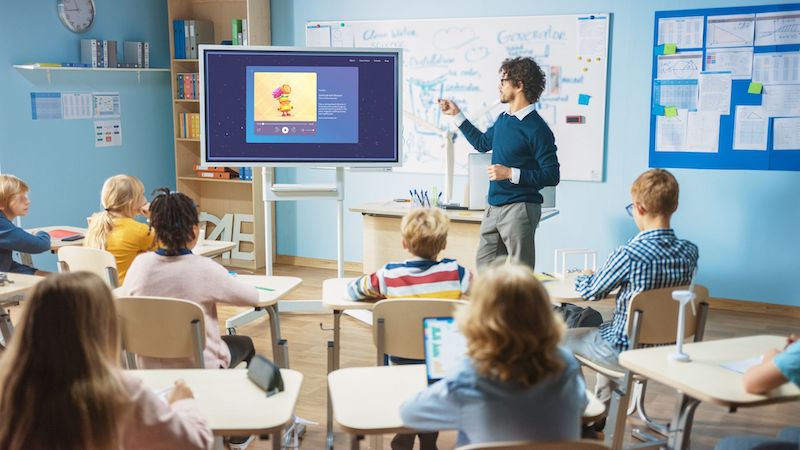
- 3 mins
5 Ways Moshi Can Help You Manage Your Classroom

When a child begins school, it provides them with opportunities to learn routines, develop trust, and build social skills outside the home. Transitioning students from activity to activity has always been as important as the activity itself. For many young toddlers in daycare and students in preschool classrooms, a naptime routine provides a break in the day to practice regulation, quiet, and rest. For educators, a nap is a wonderful time to do quiet activities such as filing, paperwork, and eating lunch. It is also an opportunity for teachers to evaluate and create a relaxing space where tensions from the day can be released.
When setting up the classroom environment, be mindful of your expectations for naps including duration and transition times to and from rest. My experiences have brought me to schools where the whole early childhood program napped at the same time (and teachers took turns going to lunch), and to a program where all the early childhood classes napped in the multipurpose room with music and all the teachers sat in silence amongst them. In elementary schools, naps are for the preschool age only. Kindergartens no longer have a formal nap due to academic rigor. In this setting, naptime is sometimes more challenging because there is activity outside the classroom from non-napping grades. Setting up the nap space is integral to a classroom set up as it provides a purposeful reason and time for rest.
For many children, taking a nap outside the comforts of their home, away from their parents, can cause stress. Therefore, teachers must understand that rest looks different from child to child. Rest or quiet time gives students tools to relax that are both comforting and developmentally appropriate. Rest time might consist of lying with a stuffed animal, quiet self-talk, reading/looking at picture books, coloring, or sitting with a teacher.
When creating a rest time routine, build in a clear transition to allow children to practice going from high levels of activity to low levels of activity. This ensures that they can eventually learn how to slow down and calm their bodies. A transition to rest may include washing up, cleaning up at a meal, getting a drink of water, etc.
Have an open conversation with caregivers about what rest time looks like. Talk to them about how objects from home can support a better naptime routine in the classroom. For example, a blanket or soft toy that comes to school and returns home each day or one that is kept in school.
Give students a role to play in preparing for their rest time. Even the youngest children can help retrieve their mat, blanket, and special teddy bears.
Use time warnings and visuals within the classroom environment to signal that naptime is approaching. This may include drawing shades, setting up naptime cots, turning off lights, playing soft Moshi Music, and having students retrieve their special naptime objects. Use anchor charts with large pictures that demonstrate this process. You can even photograph the students themselves to put on the chart.
While students are transitioning to their nap space, remind them about what rest time looks like (lights out, etc.) and expectations throughout the time.
For some children, making a social story about the rest time routine can help them transition with greater ease.
Be mindful that every child rests differently and that naptime may not include active sleeping. Think about what rest time and relaxation will look like for you if not all the children sleep. Also, consider what relaxation might look like if a child cannot fall asleep.
For kids who express or exhibit anxiety or stress before and during naptime, use trauma-informed language about caregivers returning after a nap. Remind children that you or a trusted adult will be in the room while they rest. Provide a night light, play a Moshi Story or Moshi Music, or position a child’s space near a light.
Play a Moshi Story to help kids ease off to sleep. It’s great for helping those that don’t sleep relax enough to actually rest their mind and body, too.
Wake students up gradually and slowly by shutting off music and gently rousing them. Support students in putting away their belongings. Redirect them to go to a designated spot when they are finished, such as the rug.